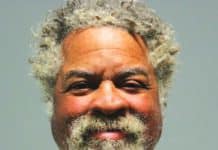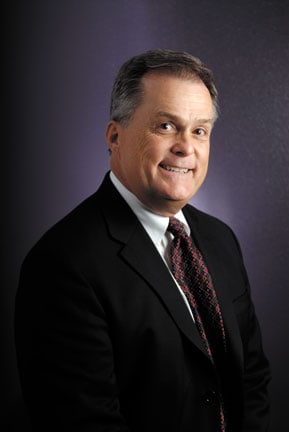Once-in-a-lifetime emergency training took place in Sedona this week.
Search and rescue personnel from across the United States and around the world, including Australia, Japan, Canada and England, worked together as an international team to conduct a first-ever, peak-to-peak "high line" rescue simulation.
By Susan Johnson
Larson Newspapers
Once-in-a-lifetime emergency training took place in Sedona this week.
Search and rescue personnel from across the United States and around the world, including Australia, Japan, Canada and England, worked together as an international team to conduct a first-ever, peak-to-peak "high line" rescue simulation.
Taking over a year to coordinate, the course was conceived by Sedona Fire District Capt. Tim Lefler and Reed Thorne, an expert in rescue training and formerly the fire district’s battalion chief in charge of technical rescue.
"We knew there were a lot of advanced rescuers who wanted experience in long ropes," Lefler said. "The last time we conducted an extreme ropes exercise was in 1989 when we set a world record on Mitten Ridge. This week’s exercise is unique in that it’s from peak
to peak."
Obtaining permission from the U.S. Forest Service to conduct the training on the National Forest was the first critical component in the planning.
Locally, the two agencies have an unusually strong history of trust and mutual cooperation, proving invaluable during the permit process.
"We have a great relationship and partnership with the Forest Service," Fire Capt. Ed Mezulis said. "Sedona has grown into the forest and in the summer’s wildfire season, we rely on their wildland fire expertise."
Conversely, the USFS, which does not have its own search and rescue team, looks to the fire district for their expertise in that realm.
"As a federal agency, we look at safety from a community perspective," USFS Wilderness Ranger Justin Moxley said. "We need to provide as much protection as possible."
Other Northern Arizona units participating included search and rescue teams from Coconino and Yavapai counties.
The operation began at "middle earth," ground level between Courthouse Butte and Bell Rock.
Seven-hundred pounds of equipment was hiked in from the Bell Rock Trailhead by the team.
The ropes alone required seven people wearing backpack-style rope bags and hiking in unison.
Although there’s a hiking path that goes to the 4,821 foot elevation of Bell Rock’s anchor, the rescue team’s ascent on the 5,235 foot Courthouse Butte elevation required climbing and rappelling.
Rigging the ropes to the anchors constructed on each summit was proceeded by a lot of math and physics.
"We use a 10-1 safety ratio," Lefler explained. "On an extreme high line, you add the weight of the loads on the rope, the victim, rescuer, basket and other equipment, and also the weight of the rope itself. We used a dynamometer to measure the total force."
Actual rescue operations involve working amid the vagaries of weather, terrain and vegetation.
The training was no different.
High afternoon winds buffeted crews and equipment on both peaks and ropes snagged on thorny vegetation that prevails at the base of both slopes.
Victor Walco, of the Coconino County Search and Rescue Team, volunteered to ride in the basket as the victim and Lefler rode in the position of rescuer.
Once rigging and safety precautions were finally complete, Walco and Lefler stepped off Courthouse Butte and into the rescue basket, dangling 1,000 feet above the Village of Oak Creek.
With ravens soaring on the thermals below them and jetliners leaving contrails in the blue skies above, Walco and Lefler made a controlled slide toward the slightly lower summit of Bell Rock.
Though much of the hard work was in preparation for the slide, there remained a difficult hurdle.
"In mid-span, we hit maximum load on both anchors and we have to wait while the ropes are completely retensioned," Lefler said.
As early evening shadows crept up Courthouse Butte and Bell Rock became just a dim outline against the night sky, Walco and Lefler swayed on the high line, the warm night’s breeze gently rocking their rescue basket, while 20 of their teammates labored on the anchors located on the opposing rock formations.
Headlamps flashing from both summits were the only indication that something unusual was happening high above the Village.
Half an hour later, the radio crackled, its operator quipping, "The eagle has landed."
Following the successful landing, the team continued working for two hours in the dark, launching safety strobes along the ropes that stretched across the canyon, and then descending the mountains in the dark.
"This is great training," said Sueanne Kubicek, a member of the Coconino County Sheriff’s Search and Rescue Team. "Coconino is the second-largest county in the U.S. spanning everything from mountains to desert. We have to be ready for every kind of rescue, from alpine emergencies to swift-water rescues to using mounted units."
Len Batley, station officer of the South Australian Metropolitan Fire Service in Adelaide, Australia, and a member of that service’s technical rescue team, agreed.
"We have mountains around Adelaide and so all of this rope training is extremely helpful, particularly understanding the safety aspects. It was a big job, a lot of hard work, but it went well," Batley said.
In total, 35 advanced rescuers attended the training.
Dave Van Holstyn travelled from Michigan for the experience.
"This training is a once-in-a-lifetime opportunity for me," said Van Holstyn, a member of the Grand Rapids Fire Department, in Grand Rapids, Mich. "Our own version of technical rescue is worlds away. In the city, we push a button and get 10 more responders within minutes. This is so much more difficult."
Although rescues of the complexity encompassed by the training are rare, Fire Chief Matt Shobert anticipates extensive benefits to everyone who participated.
"This type of extreme training greatly develops trust and respect among the team members," Shobert said. "It prepares us to meet unforeseen and hazardous rescue scenarios that regularly occur in red rock country. This drill enhanced our already high level of cooperation between local agencies, and also established global friendships."
Susan Johnson can be reached at 282-7795, Ext. 129, or by e-mail sjohnson@larsonnewspapers.com






















